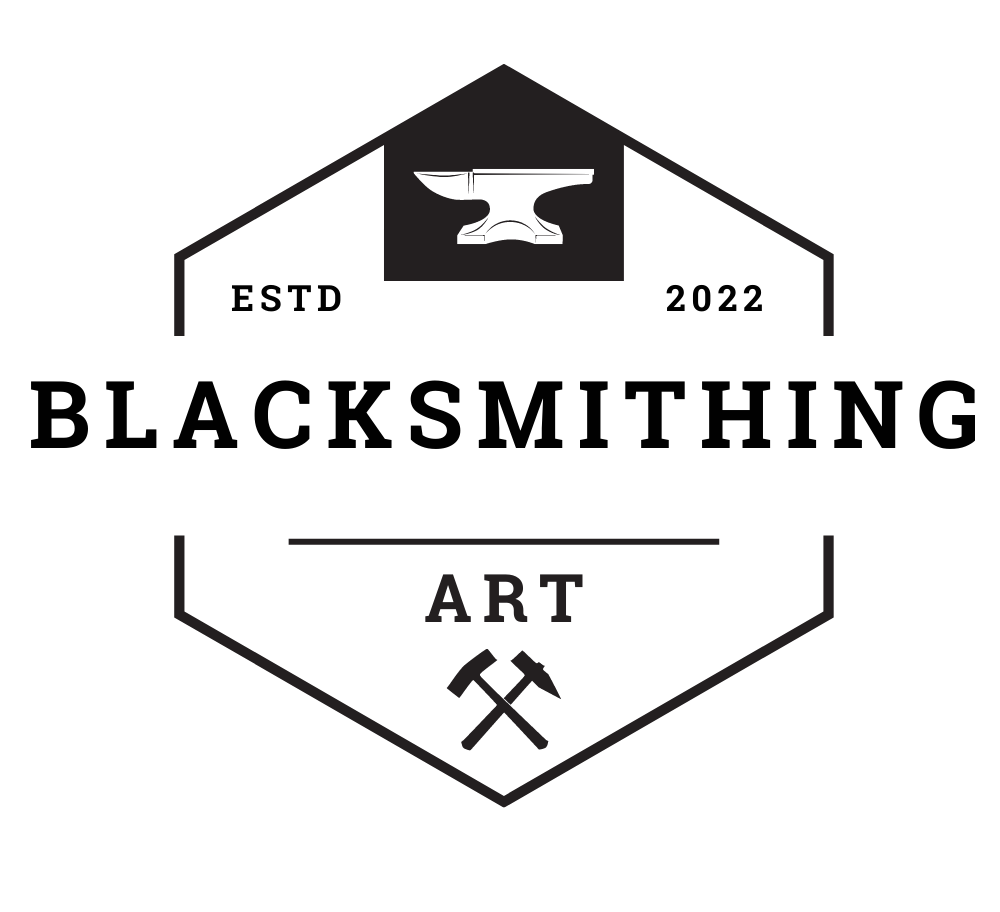A successful welding technique depends heavily on selecting the proper electrode. The type of metal and the joint have an impact on the electrode’s size and shape. We shall list a few common tungsten electrode options in this article, along with their applications.
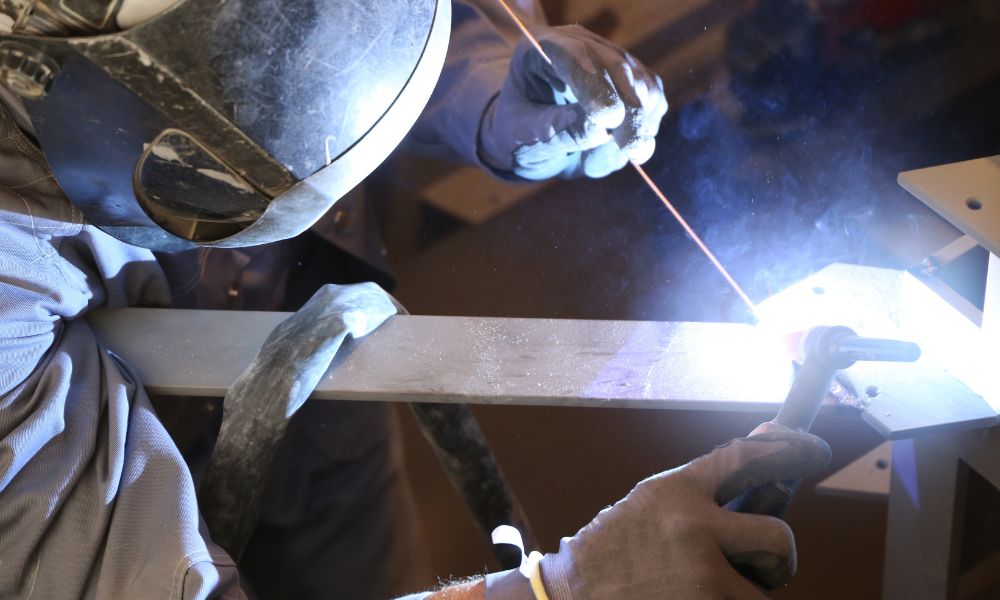
Contents
- 1 Characteristics of tungsten
- 2 Why is color important?
- 3 Tungsten electrode types
- 4 What distinguishes red from blue tungsten?
- 5 Which tungsten is ideal for an aluminum inverter?
- 6 FAQ
- 7 Conclusion
Characteristics of tungsten
Tungsten demonstrates the required balling characteristics, especially when utilized with an AC power source. Unfortunately, the metal requires manipulation to improve heat resistance and current carrying capacity because it has poor heat resistance qualities.
Different factors influence how efficiently TIG Welding produces its products. If you’re employing rare-earth electrodes, stick to the commercially accessible kind.
Due to their efficiency, a ceriated and lanthanated TIG welding electrode are perfect for both AC and DC welding. They are interchangeable with thoriated electrodes and suitable for all welding tasks.
While thoriated electrodes may not ball up uniformly, they are excellent amperage carriers. A very stable arc and excellent splitting resistance are both produced by zirconiated electrodes. Concerning AC welding, they outperform thorium.
Argon and hydrogen are the optimal gas combination for TIG welding.
The use of hydrogen-infused shielding gas helps to scavenge oxygen from the area around the weld pool, creating a significantly better weld surface and requiring less post-weld cleaning.
The weld heat-affected zone benefits from the shielding gas’s injection of hydrogen, which also makes the weld bead uniform, flattened, and shrink-fit to the base material. This mixture results in a flawless, clean weld finish.
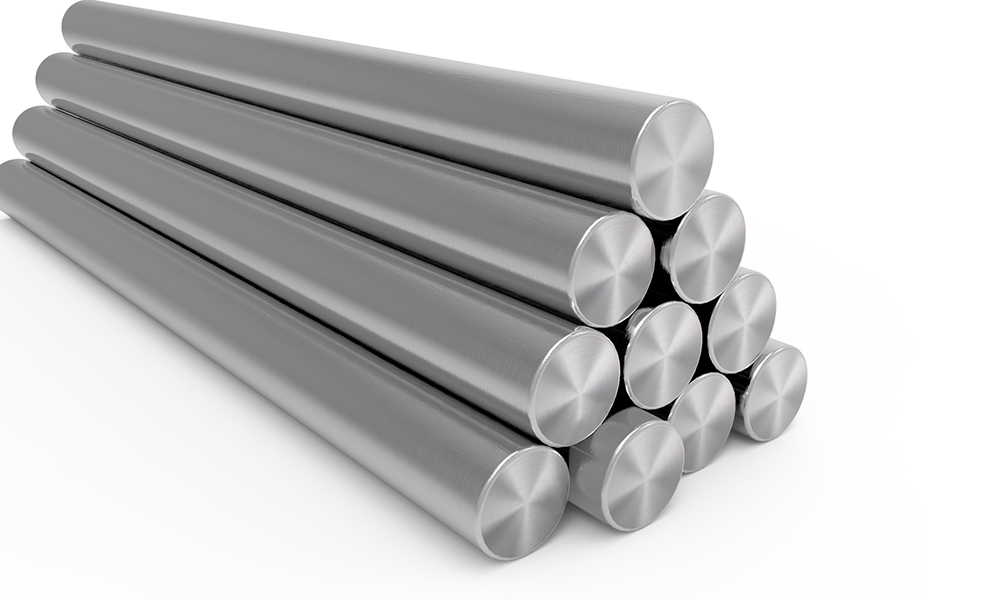
Why is color important?
The color reveals details about its chemical makeup and properties. For instance, red tungsten electrodes are highly suitable for AC welding since they are manufactured from pure thorium oxide and possess a limited current capacity. On the contrary, green tungsten electrodes have formed oxides and have a larger current capacity, making them perfect for DC welding.
Additionally, you can read the article “What Color Tungsten for Stainless Steel?“.
Tungsten electrode types
TIG is an abbreviation for tungsten inert welding, sometimes referred to as gas tungsten arc welding (GTAW) in a more technical sense. A non-consumable tungsten electrode is used in the procedure to transfer current to the welding arc. You can use a variety of tungsten electrodes for the procedure, but not all of them will be effective.
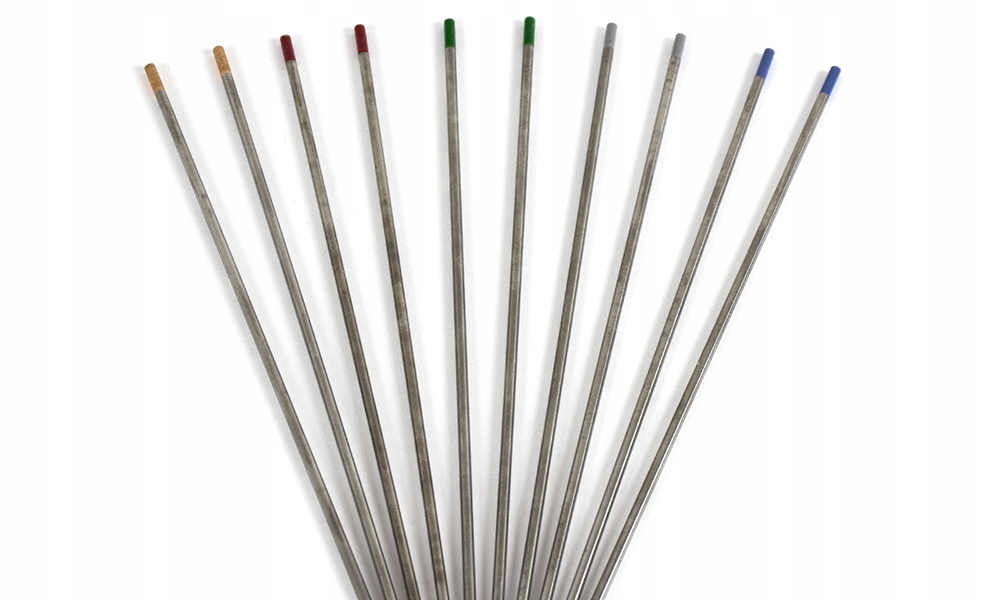
Green pure tungsten electrodes
When welding magnesium or aluminum using alternating current, green tungsten electrodes, which are created from pure tungsten (99.5%), are most frequently utilized. You’ll probably discover green welding electrodes in each welding shop you go to.
Green pure tungsten electrodes are favored because they are less expensive than alternative materials, making them popular.
Compared to other alloys kinds, green pure tungsten often burns away much more quickly.
Therefore, if you’re going to utilize green pure tungsten, we always suggest stocking up.
Advantages
They are both cheap and readily accessible
Perfect for use with AC
They are perfect for wave welding
Create a clean balled tip, which enhances arc stability
Excellent for welding magnesium and aluminum
Disadvantages
You’ll quickly exhaust them due to a high consumption rate
A relatively poor start in comparison to ceriated or thoriated electrodes
A weaker arc is not suitable for DC welding
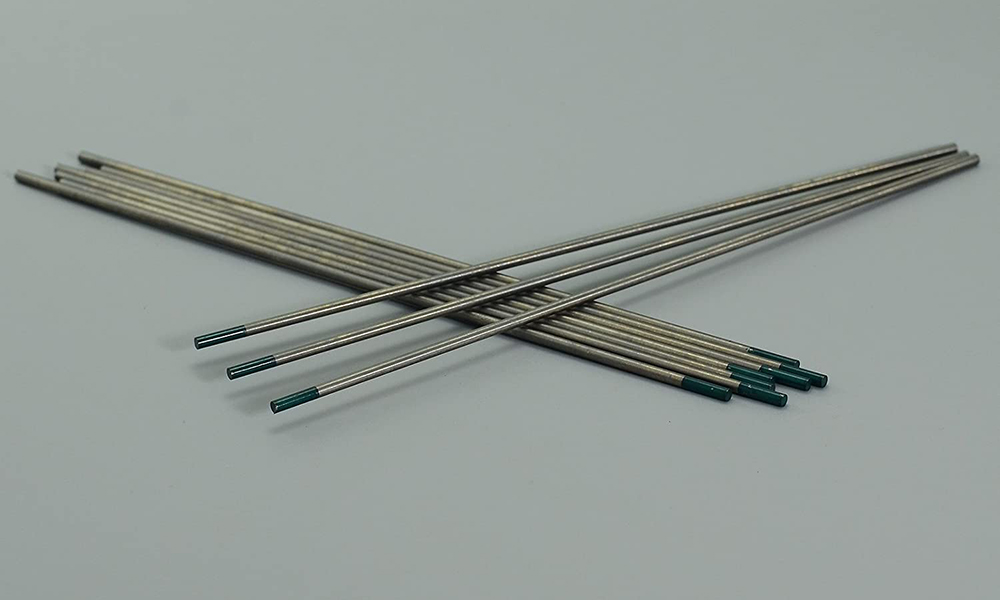
Rare earth tungsten electrodes
There are rare earth oxides present in the rare earth tungsten electrodes.
The performance of the welding process is enhanced by the inclusion of rare earth oxides, which also enhances arc stability and arc start features. Added oxides can also offer properties for direct current or specialized AC welding applications.
Rare earth electrodes may incorporate any oxide, but the producers must prominently indicate each addition and its proportion on the packaging. This allows you to purchase a particular electrode that is ideal for your TIG welding needs. Nevertheless, you won’t often have to utilize them if you’re a hobbyist.
Red thoriated tungsten electrodes
Red tungsten electrodes are a popular electrode, praised for both its durability and ease of use (perfect for beginners).
Red thoriated electrodes contain at least 97.3% tungsten and 1.7–2.2% thorium. “2% thoriated” is the name given to this mixture. Sharp edges can be established and kept by using an electrode with evenly distributed tungsten. Red electrodes are best for welding metals.
Thorium enhances the electrode’s ability to emit electrons, improving arc starts and allowing the welder to generate significant current capacity.
A lower consumption rate is attained with red thoriated electrodes, since they can operate below their melting point. This implies that each electrode will be durable.
Additional important characteristics include less arc wandering, better arc stability, and less tungsten deposition in the weld puddle.
Red tungsten electrodes are best suited for specialty AC welding, such as thin-gauge aluminum and welding materials less than 0.0.
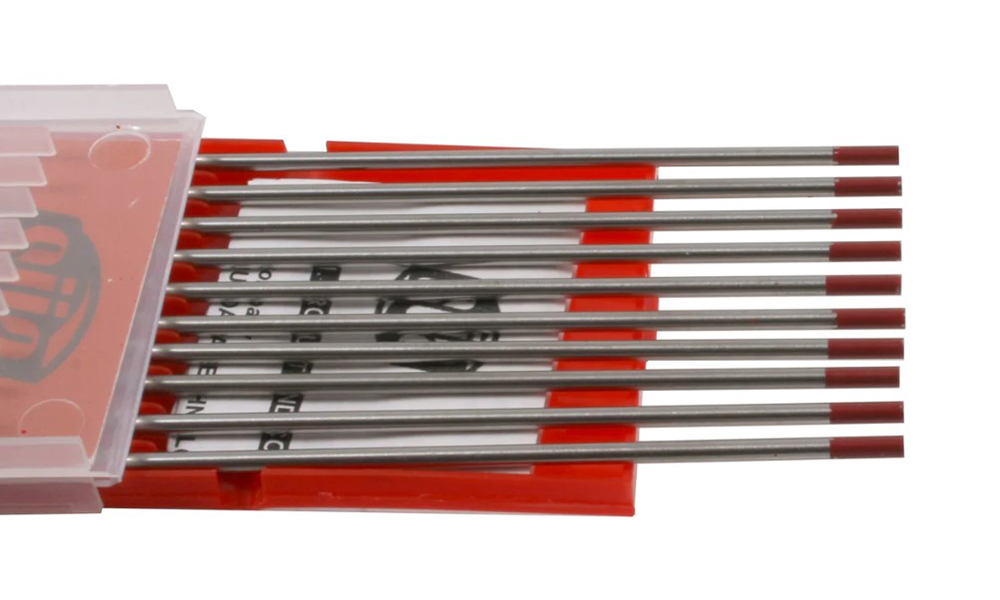
The red thoriated tungsten electrode is also favored for DC welding on titanium, steel, and nickel, with electrode negative or straight polarity.
They are ideal for arc welding processes due to their low radioactivity and strong current-carrying capacity. An extra benefit is that they are simple to use and have a long lifespan.
Electrodes made of thorium oxide are perfect to be utilized with a DC power source. They can withstand intense heat and have high melting temperatures with little melting.
They have average corrosion rates and modest amperage demands, making them appropriate for usage on thinner steel plates.
Nevertheless, thorium oxide emits dangerous alpha particles. Rare earth can take the place of thorium oxide, removing the health dangers while retaining several advantages.
Furthermore, they are the best option for certain DC electrode negative welding on carbon steel.
Thorium is a radioactive substance, therefore, be cautious, especially if you’re grinding thoriated tungsten electrodes. Always adhere to the owner’s manual.
Advantages
Durability (low consumption rate)
Quickly establishes and keeps a sharp edge
Simple to deal with (perfect for amateurs)
Minimal pollution from the weld puddle
Provides great arc starts
More capacity for current
It is efficient for both AC and DC welding
It is efficient for thin metals and titanium alloys, steel, aluminum alloys, and nickel alloys
Disadvantages
Due to its radioactivity, thorium presents a health threat.
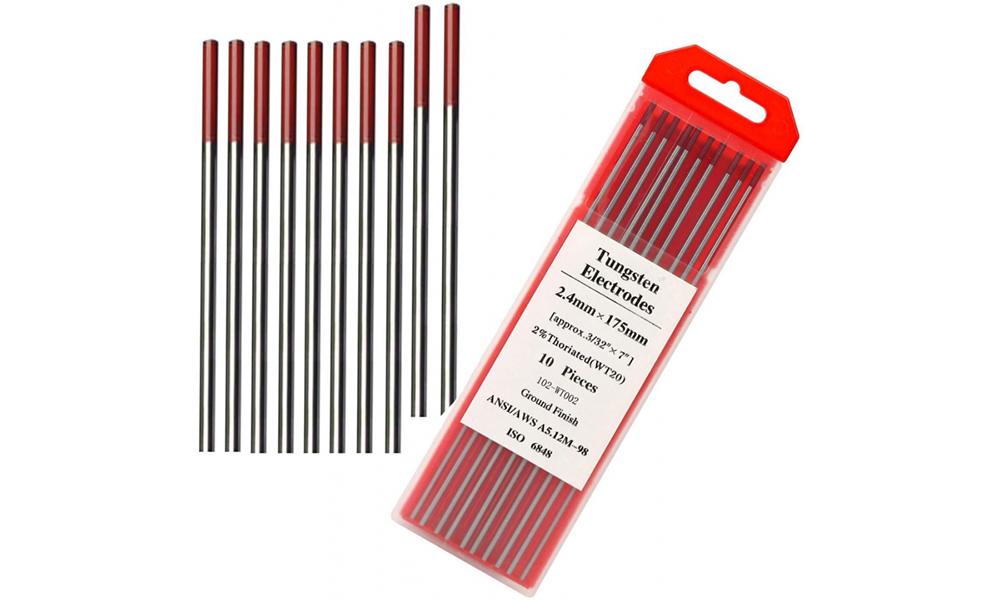
Ceriated tungsten electrodes
Ceriated electrodes are composed of 97.3% tungsten and 1.8–2.2% cerium oxide. Although they are best suited for low-current AC operations, they can also be used in certain DC applications.
Ceriated electrodes are the ideal electrodes for you when you intend to weld tiny, delicate pieces, or you work with thin metal sheets, pipe fabricating, or orbital tubes.
These are durable electrodes with great ignition and re-ignition properties. They create incredibly stable arcs and can even be employed at low amperage levels. Ceriated electrodes outperform pure tungsten in terms of current carrying capacity when erosion rates are low.
Advantages
Suitable for both DC and AC welding jobs
Suitable for welding with low current
It is helpful when operating in lower temperatures
Disadvantages
Excessive amps may alter the electrode’s composition
It is suitable only for low-temperature applications
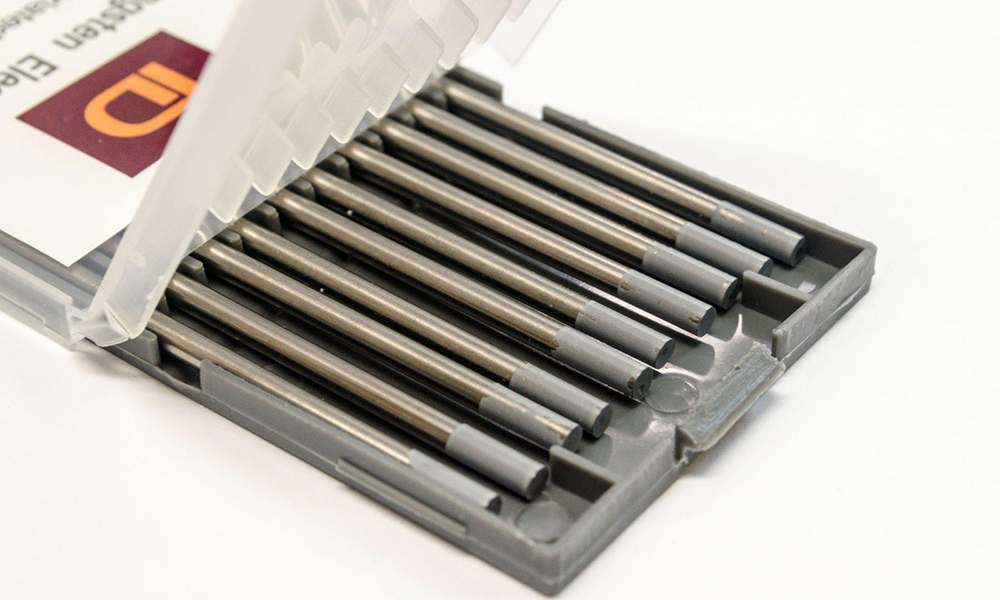
Orange ceriated TIG welding electrodes
They are the best choice for DC welding and lower current procedure because they have a 2% ceriated content. Several professionals have discovered that it performs exceptionally well as a substitute for thoriated electrodes because it’s able to weld titanium and carbon steel.
Lanthanated tungsten electrodes
They have a minimum tungsten content of 97.80 percent and range from 1.30 to 1.70 percent lanthanum, also referred to as lanthana.
These electrodes share several benefits with ceriated electrodes, including efficient arc initiation, a low burnoff rate, stable arc, and great reignition properties.
The conductivity properties of 2% thoriated tungsten are also present in them. In rare circumstances, 2 percent thoriated can be replaced with 1.5 percent lanthanated without requiring major alterations to the welding process.
While trying to maximize your welding expertise, lanthanated tungsten electrodes are the best choice. They can function well on electrode negatives that are AC or DC with a pointed end. When using DC or AC from square wave sources of power to weld stainless steel, it also retains a sharpened point nicely.
They help weld Copper alloys, Aluminum alloys, and Nickel alloys.
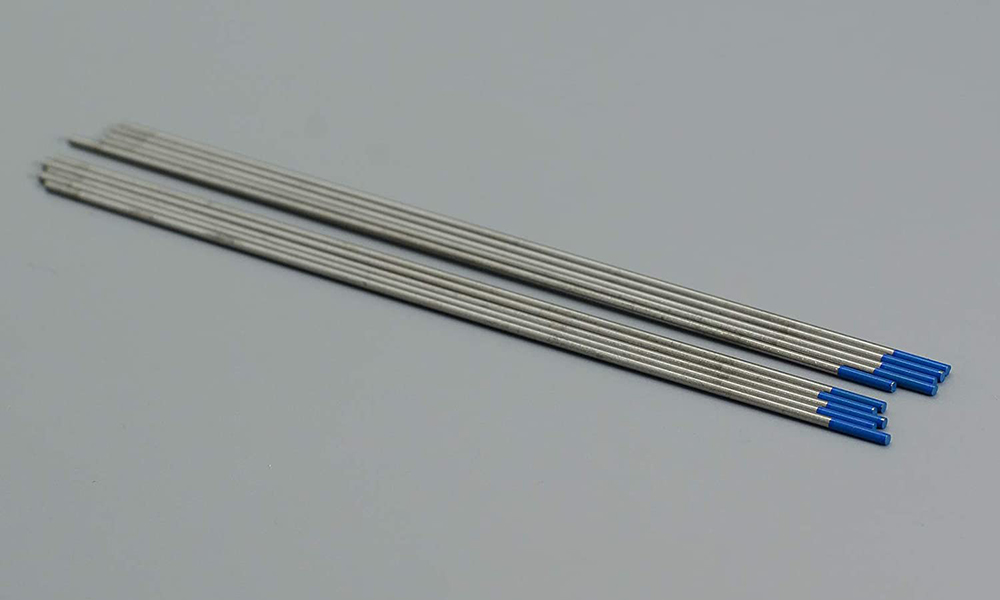
What distinguishes red from blue tungsten?
The method of manufacture is the primary distinction between them. To create red tungsten, a powder mixture is heated till it solidifies. The metal is melted to create blue tungsten, after which it is rapidly cooled. Due to this procedure, it becomes denser, making it ideal for welding, as well as other uses that call for a high density.
Most people trying to cut costs choose red tungsten. Due to its lower melting point compared to blue metal, it is also less expensive to heat. Red might reduce your expenses, even though it isn’t as powerful or long-lasting as other colors.
Perhaps this isn’t the greatest option if you require something durable. Nonetheless, I believe that everyone agrees that having extra cash is pleasant.
Which tungsten is ideal for an aluminum inverter?
AC aluminum welding performs best with zirconiated or pure tungsten electrodes. Ensure the diameter of the electrode is sufficient to effectively transmit the welding current if you’re employing one. Larger diameter electrodes are needed to lower resistance in an AC power supply.
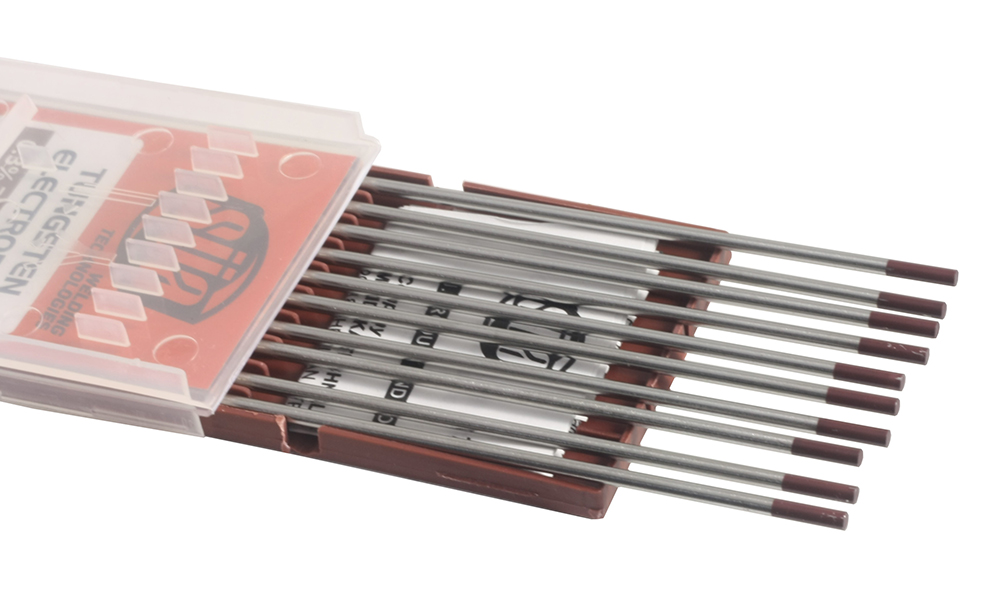
You may be interested in an article about the strongest type of welding.
FAQ
Which tungsten is best for stainless steel?
The choice of tungsten electrode does not change, even as TIG welding stainless steel is distinguishable from joining mild steel and is more difficult. Lanthanated, thoriated, or ceriated electrodes can be efficient in TIG welding.
Red tungsten remains a flexible option, however, because of security risks, you can also utilize lanthanated electrodes. In low-amp settings, ceriated tungsten performs better compared to gold tungsten.
What color tungsten should I use for stainless steel?
Given the durability and adaptability of the 2% thorium combined with the tungsten, red TIG welding tungsten remains the most widely utilized electrode.
A more stable arc start and a greater current capacity are made possible by the thorium. Because the electrode generates fewer residues, the finished weld puddle is cleaner.
What size tungsten for stainless steel?
Employing 2% thoriated tungsten electrodes when welding steel is more appropriate. Use a pure tungsten electrode with a diameter of about 1/16 inch for welding stainless steel.
What is grey tungsten used for?
While the lucid tungsten synthesis is at a minimum of 97.3%, the major oxide in ceriated tungsten electrodes is cerium oxide, which is present in concentrations of approximately 2.2%. These terminals are suitable for low-current AC applications.
Moreover, they could be applied in DC applications. Grey tungsten terminals work well for welding small, delicate components such as thin sheet metal and orbital cylinders.
These should be used with modest amperage levels.
Nowadays, manufactured tungsten terminals are preferred by welders over pure tungsten ones since the former offers superior current-conveying characteristics at comparable sizes.
Conclusion
Understanding TIG welding is challenging. Yet, bad-quality welds are frequently the result of inappropriate TIG electrodes.
The quality of your welds will be greatly improved by employing the right TIG welding tungsten for the applications that they were created for.
